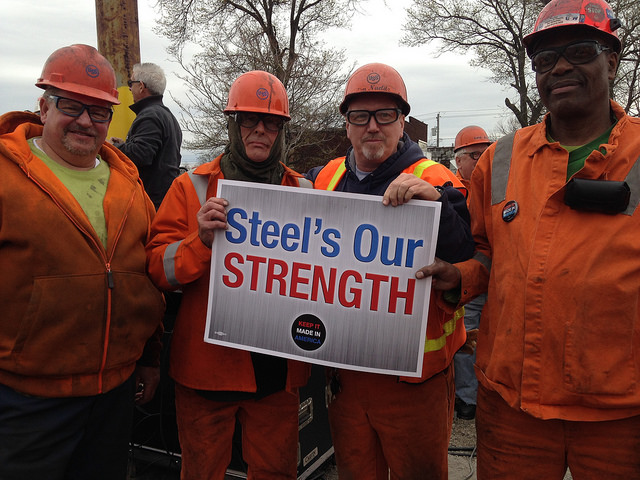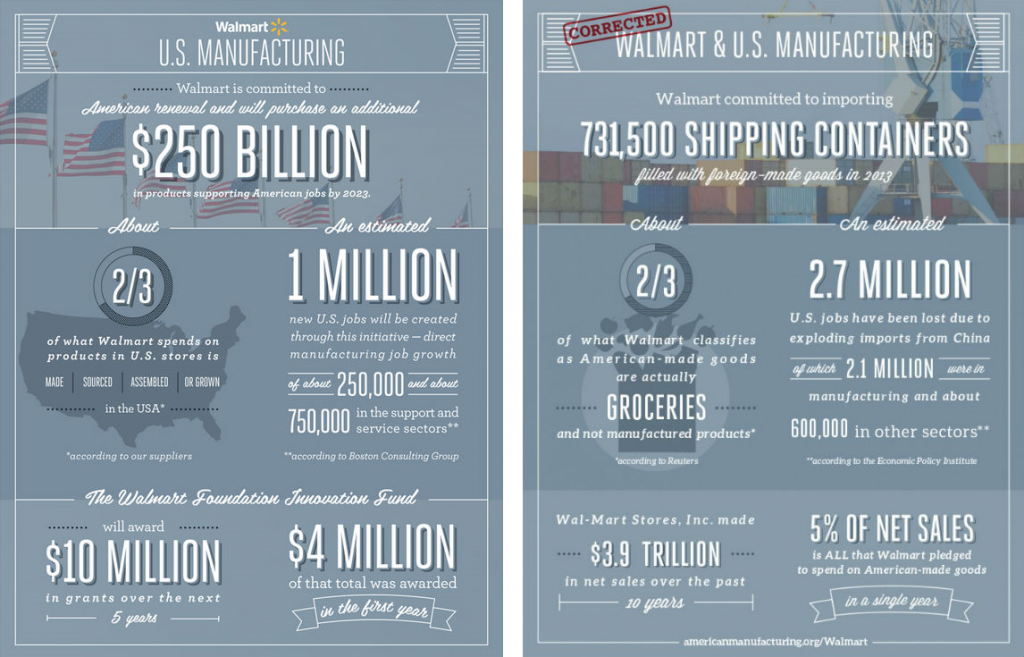
How do you measure a year?
We're not sure you can, but we'll give it a shot. The U.S. manufacturing sector added 174,000 jobs so far this year, according to the #AAMeter. That's 174,000 reasons to celebrate.
Let's raise a glass this holiday season to American workers and manufacturers. And give a round of applause to all those who helped make our favorite manufacturing moments a reality this year.
We're putting the Obama administration and Congress to work for the American middle class in 2015.
Best Campaign: Save Our Steel Jobs #SOSJobs
In the spring of 2014, thousands of American steel jobs were in jeopardy. A surge of oil country tubular goods (OCTG) imports from South Korea were flooding the U.S. market. AAM, along with our colleagues at the United Steelworkers and United States Steel Corporation, set out to urge the Obama administration to enforce the rules.
We rallied thousands of steelworkers, public officials, businesspeople, and everyday citizens in Ohio, Illinois, Pennsylvania, Texas, Alabama, and Minnesota. It wasn’t just about saving jobs, but saving entire communities and preserving a way of life.
And we did in fact, save our steel jobs.
The Commerce Department, followed by the International Trade Commission, found significant dumping by South Korean companies in its final determination of the OCTG trade case. As a result, steelworkers across the country like Gayle Henderson were able to keep their jobs.
Best Opinion: What 'House of Cards' Gets Right About China

2014 brought the second season of House of Cards, the award-winning TV program with the incredibly cynical view of American politics. Critics praised it for its realistic portrayal of machinations in Washington’s halls of power, but our own Scott Paul lauded it for touching on an issue that influences trade policy yet is rarely discussed: currency manipulation.
In the show’s plotline, the fictional White House brings a World Trade Organization case against China for manipulating its currency. Imagine that, suggested Paul in an opinion for Politico:
What would happen if the United States put its full weight into ending the currency manipulation that Beijing and other trading partners use to undermine American manufacturers? Certainly not the trade war that some have predicted. And that’s because, just like in “House of Cards,” the infrequent threat of action by Washington has always goaded China to acquiesce.
“A free-floating currency is inevitable,” confides a Chinese billionaire to Frank Underwood on the show. “But it’s important that it looks like America forced us out, not like we gave in.”
With that in mind, we should goad China again.
You can read the whole thing here.
Best Book: Factory Man
Domestic American manufacturing can’t compete in a globalized world, right? Right?
Wrong. It does in Galax, Va., home to Vaughan-Bassett Furniture, where 700 manufacturing workers still have jobs because the factory owner filed an anti-dumping trade case against China. And won.
It’s such a unique story that it inspired an excellent book, Factory Man, which we feted at an event at AAM’s Washington offices in October. Here’s author Beth Macy talking about the story’s subject, John Bassett III:
Best Report: Infrastructure Investment Creates American Jobs
It’s no secret that America’s infrastructure is in dire need of repair. One in five bridges is now structurally deficit; one in five roads needs major work. Meanwhile, a water pipe bursts every two minutes, our railways lag behind the rest of the world and a backlog of upgrade needs create major delays at our airports.
But what often is overlooked is the substantial job creation that would happen if we properly invested in our infrastructure. Researchers at Duke University’s Center on Globalization, Governance & Competitiveness found that every $1 billion in investment would yield more than 21,000 new jobs. Meanwhile, a long-term transportation bill worth $114 billion annually would create 2.5 million jobs.
Not investing in infrastructure is also hurting America’s competitveness abroad, the report noted. Lead researcher Lukas Brun explains more:
Best Legislation: The Cromnibus
OK, the 113th Congress wasn’t exactly the most productive ever, and lawmakers could have done a lot more to help American workers. But the manufacturing sector did record a couple of key wins in the Cromnibus, the massive bill that keeps the government funded through Sept. 2015.
The Cromnibus included the Revitalize American Manufacturing and Innovation (RAMI) Act, bipartisan legislation to expand a national network of manufacturing innovation institutes. These regional hubs will bring a variety of players together to help address manufacturing challenges and bring ideas to market. Legislation put forth by Sens. Chris Coons (D-Del.) and Mark Kirk (R-Ill.) to create a National Manufacturing Strategy also passed as part of the Cromnibus.
Congress will have a lot of work ahead come January — and we’ve got a few ideas for how lawmakers might get started.
Best Infographic: Walmart & U.S. Manufacturing, Corrected
The web filter at the Alliance for American Manufacturing (AAM) caught a big ol' piece of chaff this year, in the form of a release from Walmart. America's largest retailer has announced plans to purchase $250 billion worth of American-made goods over the next decade. It decided to share the good news of its sudden economic patriotism via an infographic, which is heavy on the fancy font but light on context.
So AAM took a stab at filling that context in, via an infographic of its own.

